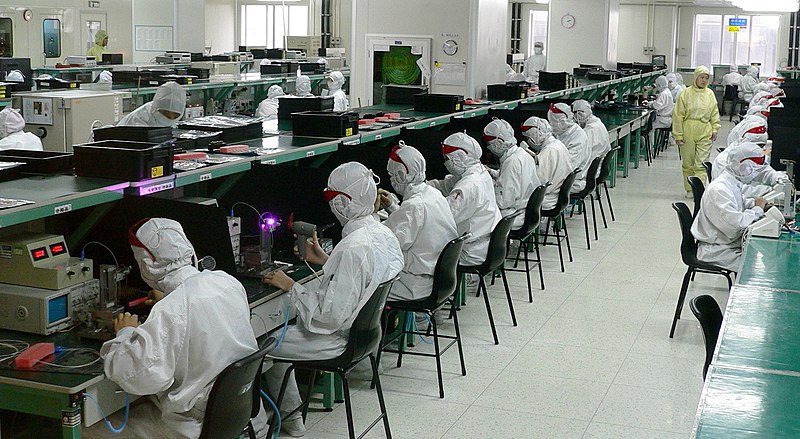It’s going to turn out that a nation of billions can, surprisingly, figure out how to make chips domestically once it is no longer possible obtain them efficiently from external markets. This might take a few years to ramp up but it will happen and the market will be flooded.
Most people I’ve talked to on forums like this believe it is impossible for various reasons that center around technical competence.
I am no lover of Chinese governmental policies but this attitude is both racist and risky. I am old enough to remember people saying Japam was only good at copying Western inventions, for example. I also remember a few years later when everyone wanted to learn to speak Japanese and The Book of Five Rings was the hot CEO book of the month.
China will figure this out.
and the market will be flooded.
China will figure this out.
Nope. China won’t figured it out and will only be able to do semiconductors that trail behind a lot for a very long time. The smallest node that actually works for them is 16 nm, SMIC’s 7 nm in the new Kirin 9000S Chip is not even close, especially compared to the Krin 9000 wich is made with TSMCs 5nm node. Performance and Efficiency are up to 45% behind TSMCs stuff (Which is not something that can be explained away with just because of the smaller node).
But that’s not all: The way SMIC manufactures these chips is extremely expensive, due to the fact that they have to use multi-patterning. This also effects yields significant. They have no chance to compete on the open market against Samsung, Intel and TSMC, even with the high subsidies from the Chinese government. Also, while the way they are being produced allows for 6 nm, the gate length and contact width are going to reduce yield even more.
So they simply can’t flood the market.
I feel like this is very short sighted. Yes, they can’t do it now. Yes, they are far behind…
But as a manager and a father, the textbook way you get someone to truly learn something and grow is to give them pointers, give them a reason to want to do it, and then let them figure it out on their own. This is how kids learn to walk, how people get good at games, how employees are pushed to learn and grow in their roles, and how countries develop their own tech.
China clearly has enough examples and pointers (legally or not), and now we have a given them a reason to do it (barring them from importing it, but still needing the tech). It will take a while, and their end goals and processes might be different than what ours were. I.e., Sometimes my kid thinks of doing something a different way and it still works. Time will tell. But in the end, they will have their own logistics, their own factories, and their own products. They might be worse, but they could definitely be better, that’s all up to them.
If you wanted China to stay dependent on us, then this was not the right move.
Eventually maybe. But it will be super tough to get to the leading edge, because by the the time they reach where the rest of the world currently is, the rest of the world will go a couple more steps ahead.
What companies like ASML have achieved are half a century of R&D that even if china just copy, paying no attention to IP, there are so many things to perfect. Things like the specialized mirrors and optics that are needed.
China can probably one day get to where the rest are currently in a few years, but to both manufacture and keep per unit costs down at the same time is not an easy hurdle to cross.
SMEE already has an advanced DUV lithography machine. SMIC already knows how to scale foundry operations. China can already domestically produce basically everything needed in a lithography machine
Literally, literally, China’s only issues are the gap from DUV to EUV. These include the light source, photo resist, and a few other factors, but it’s by no means building from the ground up.
Edit: oh, and Chinese lithography machines are notoriously cheap compared to the competition
7nm isn’t close to 5nm? There’s a difference of 45%? What! No way!
Fact is, the Huawei Mate 60 has moved over 30 million units. While that’s in no way comparable to Apple’s 200+ million units annually, it’s a significant scale representing a robust supply chain that’s capable of churning out functioning chips. If, by your claims, yields are low because of an immature process, then you’d only expect yields to go up as the process matures.
Yield is not a static factor, but one built on by process development and co-design. You can look at how Intel’s yields have increased over the years: they refrained from using EUV on their 10nm (Intel 7) process and, while they ran into a bunch of engineering challenges and delays, still ended up shipping Intel 7 at scale.
These aren’t unsolvable issues, but ones of engineering and manpower and skill. EUV still requires multi-patterning for 3nm, so it’s not like the problem has been eliminated.
It’s absolutely incredible to me that US thought they could hobble a nation of 1.4 billion that has a superior education system and produces more STEM graduates than US does. This was the definition of hubris.




